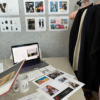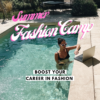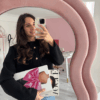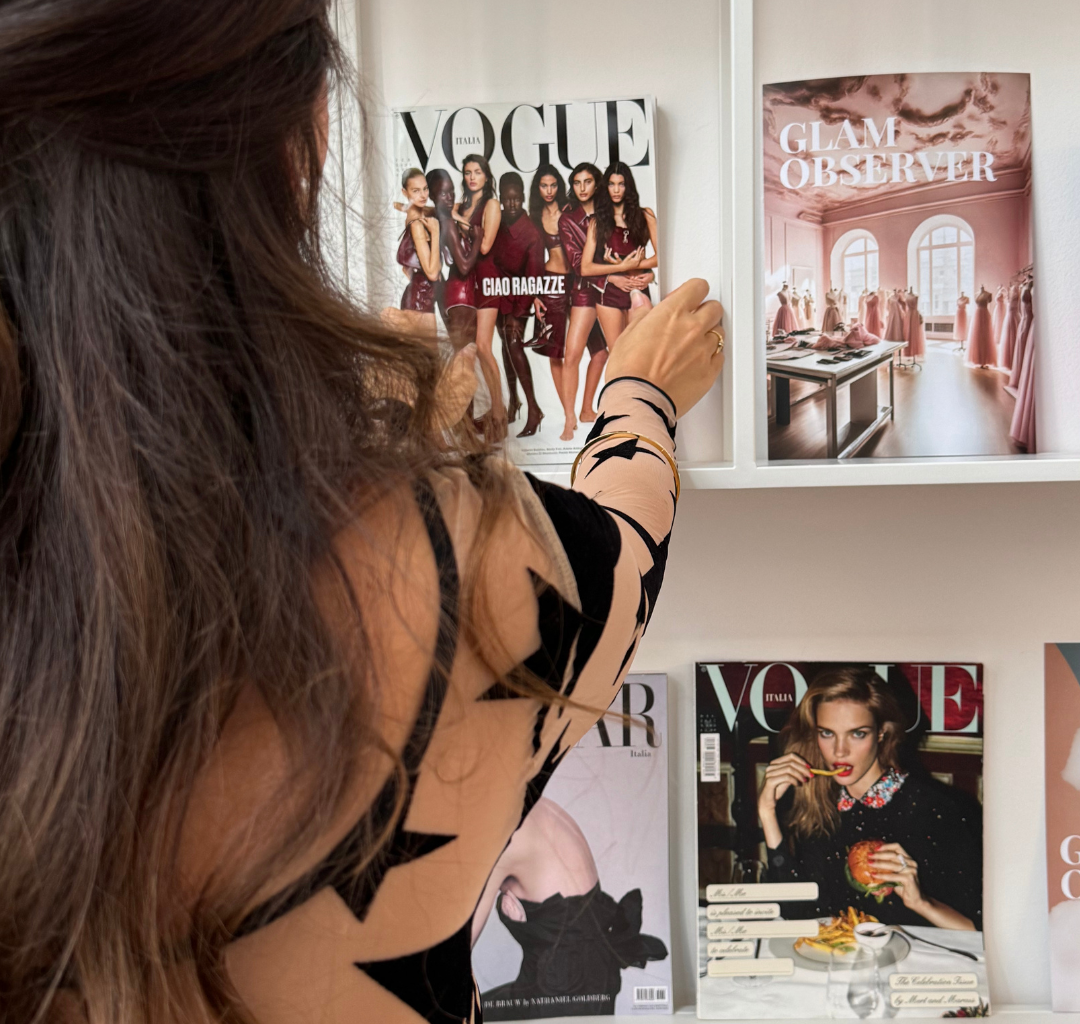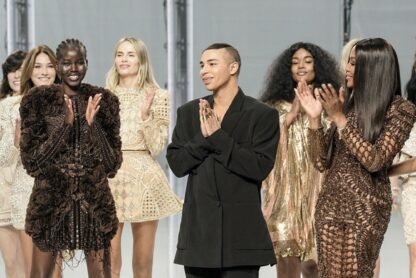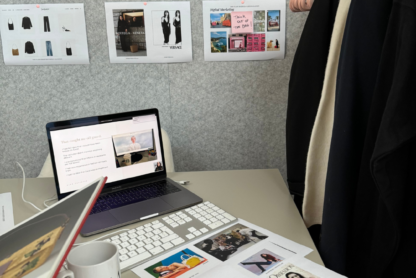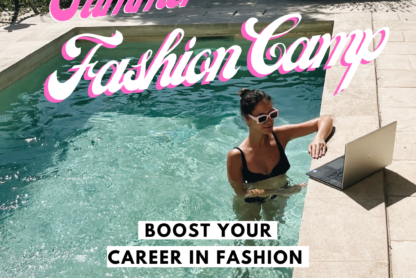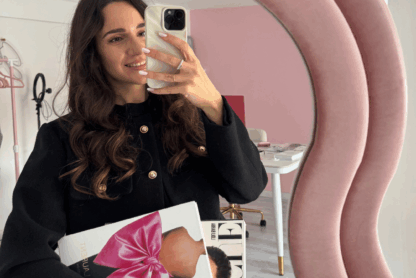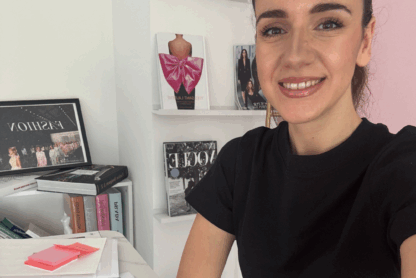Landing an internship at a fashion magazine is a dream for many aspiring fashion professionals. As a student or recent graduate, you might not have years of experience, but showcasing your passion, creativity, and willingness to learn can set you apart. By crafting a compelling resume, writing an engaging cover letter, curating strong writing samples, and demonstrating your industry knowledge, you’ll increase your chances of landing the role.
Whether you want to become a fashion writer, editor, stylist, or marketer, an internship at a magazine like Vogue, Harper’s Bazaar, or Elle can provide invaluable experience. However, competition is fierce, so your application must stand out. Nowadays, a resume isn’t enough anymore–you need other pieces to complete the puzzle to have the chance to enter a magazine’s office (or virtual room 😉 )
Here’s everything you should include to craft a compelling application for a fashion magazine, especially if you’re a student or recent graduate.
1. A Tailored Resume
Your resume should be clear, concise, and tailored to the fashion magazine industry. Include:
- Contact Information: Your name, phone number, email, LinkedIn, and portfolio
- Education: List your university, major, and relevant coursework (e.g., The Fashion Writer Accelerator, Break into the Fashion Industry.
- Relevant Experience: Even if you don’t have direct experience, highlight fashion-related school projects, such as writing the school journal/blog, any writing samples, or your personal fashion blog.
- Skills: Depend on the type of internship you want to get.
>>Editorial interns are expected to have strong organizational skills and be comfortable with multi-tasking, as they’ll be right-hand to their boss and be involved in different tasks.
>>For visuals-focused roles like Graphic design and Art Direction, you need great attention to detail, a sense of aesthetics, and a knack for research.
>>For a Marketing internship, strong analytical skills and an understanding of market and cultural shifts is a must.
2. A Vogue approved Cover Letter
Your cover letter is your chance to showcase your personality and enthusiasm. Here’s how to structure it:
- Personalized Introduction: Address the hiring manager by name if possible.
- Why This Magazine?: Show that you understand the magazine’s aesthetic, voice, and values.
- Your Unique Value: Explain how your background, skills, and passion align with the role. If you’re a student, emphasize your coursework, extracurricular activities, or student publications.
- Relevant Experience: If you don’t have formal work experience, mention class assignments, fashion blogs, or personal projects.
- Closing Statement: Reiterate your enthusiasm and express your eagerness to contribute.
3. Portfolio or Writing Samples
For editorial roles, your writing samples will make or break your application. Include:
- Published Articles: If you’ve written for your own blog, school newspaper, or website, include links.
- Fashion-related Writing: Show your knowledge of trends, designers, or runway analysis.(check the fashion writing course to learn how to write articles..)
- Magazine-style Pieces: If you haven’t been published, create a few pieces that match the magazine’s tone.
- Multimedia Work: If you have social media graphics, videos, or styled shoots, include them to showcase versatility.
For other roles at magazine:
- Fashion Intern: Create a concept for an imaginary photoshoot (include an inspirational mood board, the venue, models, and looks using pictures found online) or write a pull letter, aka a document that editors/stylists send to PRs of brands to request samples.
- Beauty Intern: Build a short presentation on the latest beauty trends, or develop a beauty product/trend page spread.
- Art Direction/Graphic Design: Curate a fashion spread or a mood board on the current trends.
- Social Media Intern: Build a post around a recent magazine article or analyze the engagement rate of the latest 10 Instagram posts.
- Brand Marketing Intern: Analyze the magazine’s target audience and demographics with the help of a media kit.
Extra tip for your fashion portfolio:
Always take care of the visual component of your portfolio, minding every detail: formatting, image quality, typos, colors, etc. Aesthetics are important in fashion–especially for magazines, which are visual treasures.
You can find many pre-made templates on Canva, which has magazine cover-like-looking layouts that can be perfect for the first page of your portfolio!
4. Social Media Presence
Many fashion magazines value candidates with strong social media awareness. Ensure your social media is:
- Professional & Aesthetic: Showcase your fashion knowledge and creativity.
- Engaging: Interact with fashion industry professionals, share insights, and post relevant content.
- Portfolio Link: If you have a blog or Instagram dedicated to fashion writing or styling, highlight it.
I really like this example.
5. Attention to Detail & Formatting
Fashion magazines appreciate aesthetics and attention to detail. Make sure your application:
- Has No Typos: Proofread everything carefully.
- Is Well-Formatted: Keep a clean, stylish, and modern layout.
- Uses a Professional Email Address: Avoid outdated or unprofessional email handles.
- Reflects Creativity: If applying for a creative role, consider designing a visually appealing resume or portfolio.
6. Bonus Tips to Stand Out
- Network: Reach out to past interns or employees on LinkedIn(check the break course to learn how to use it).
- Follow Up: Send a polite follow-up email a week after applying.
- Express Passion: Show genuine enthusiasm for the industry and the magazine.
- Take Initiative: If you don’t have experience, start a fashion blog, contribute to student publications, or volunteer for fashion-related projects.
Need help with landing your first gig at a fashion magazine?
My online course Break into the Fashion Industry will guide you step-by-step through resume, cover letter, and portfolio building, where to find opportunities at magazines, plus networking strategies. You can start with my free webinar.
Aspiring fashion writers, also check out my online course The Fashion Writer Accelerator.
